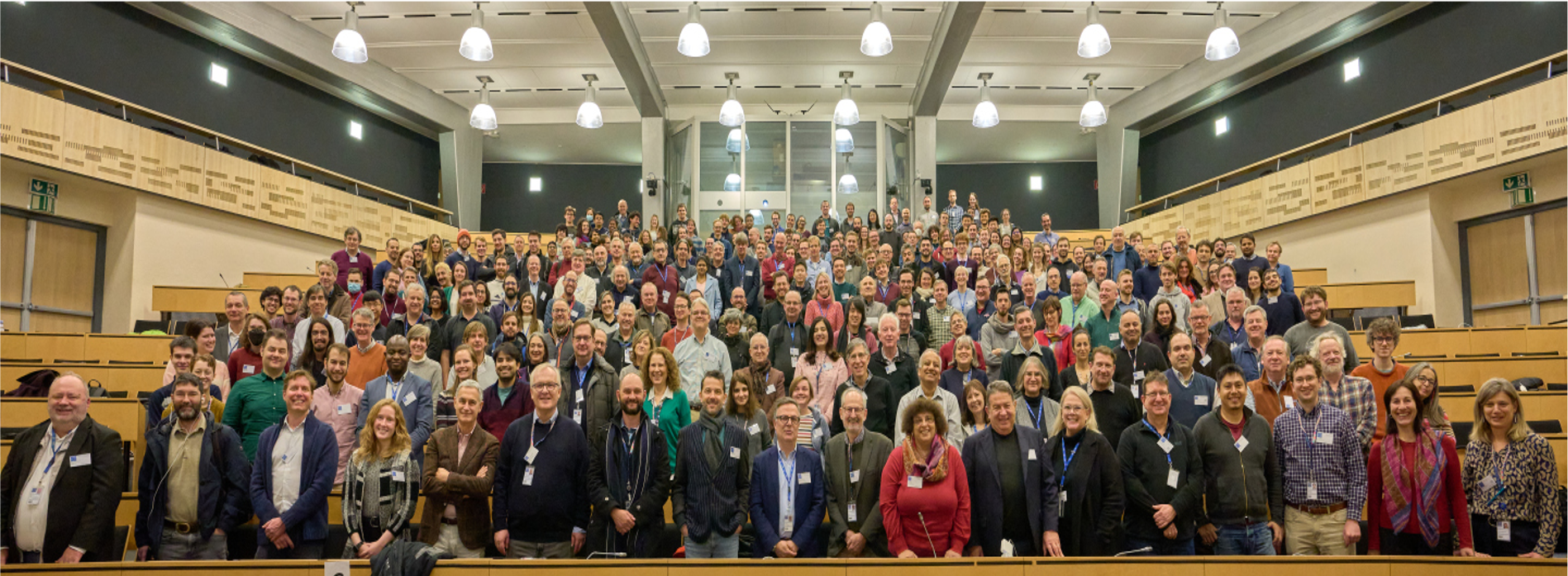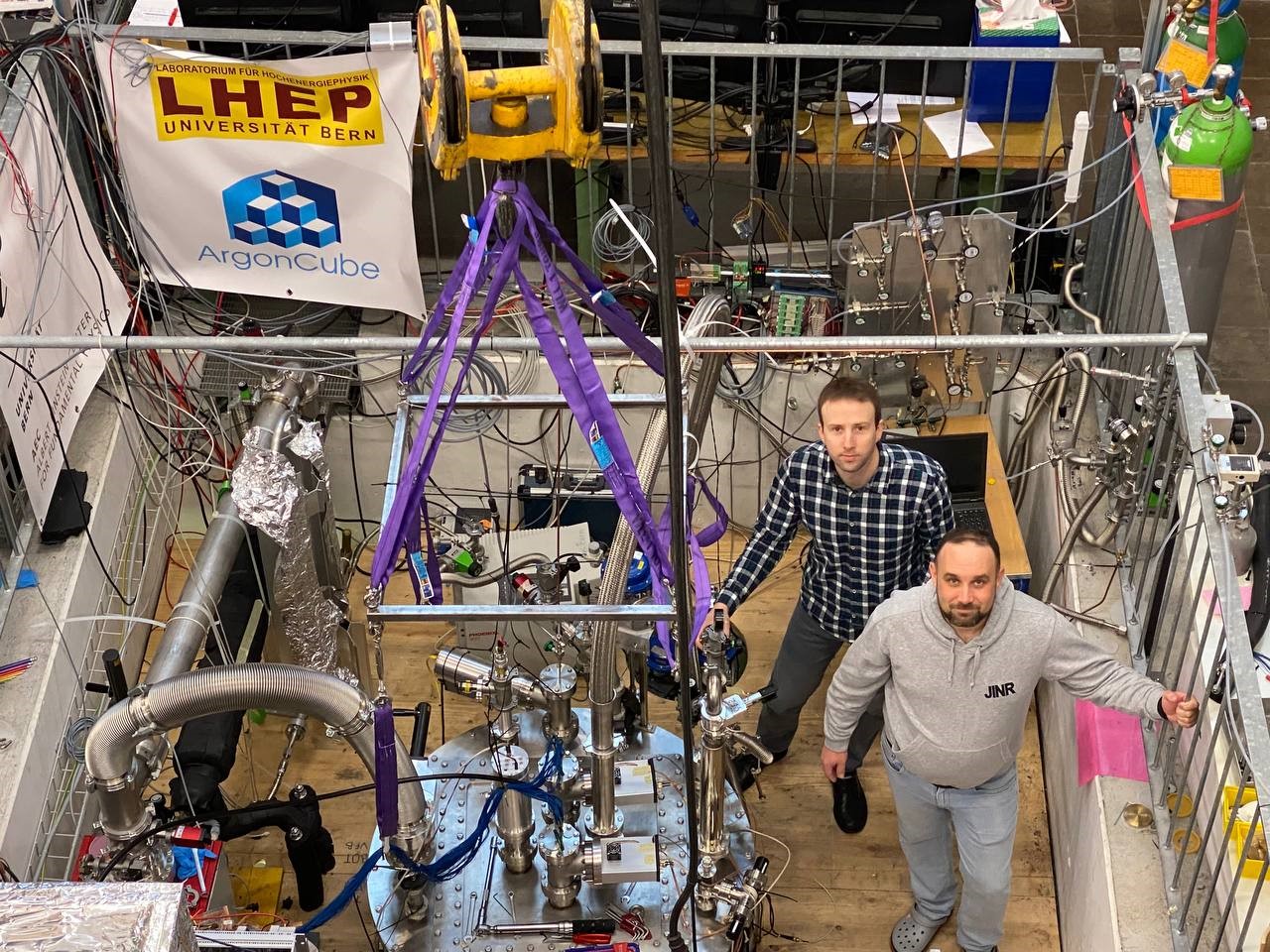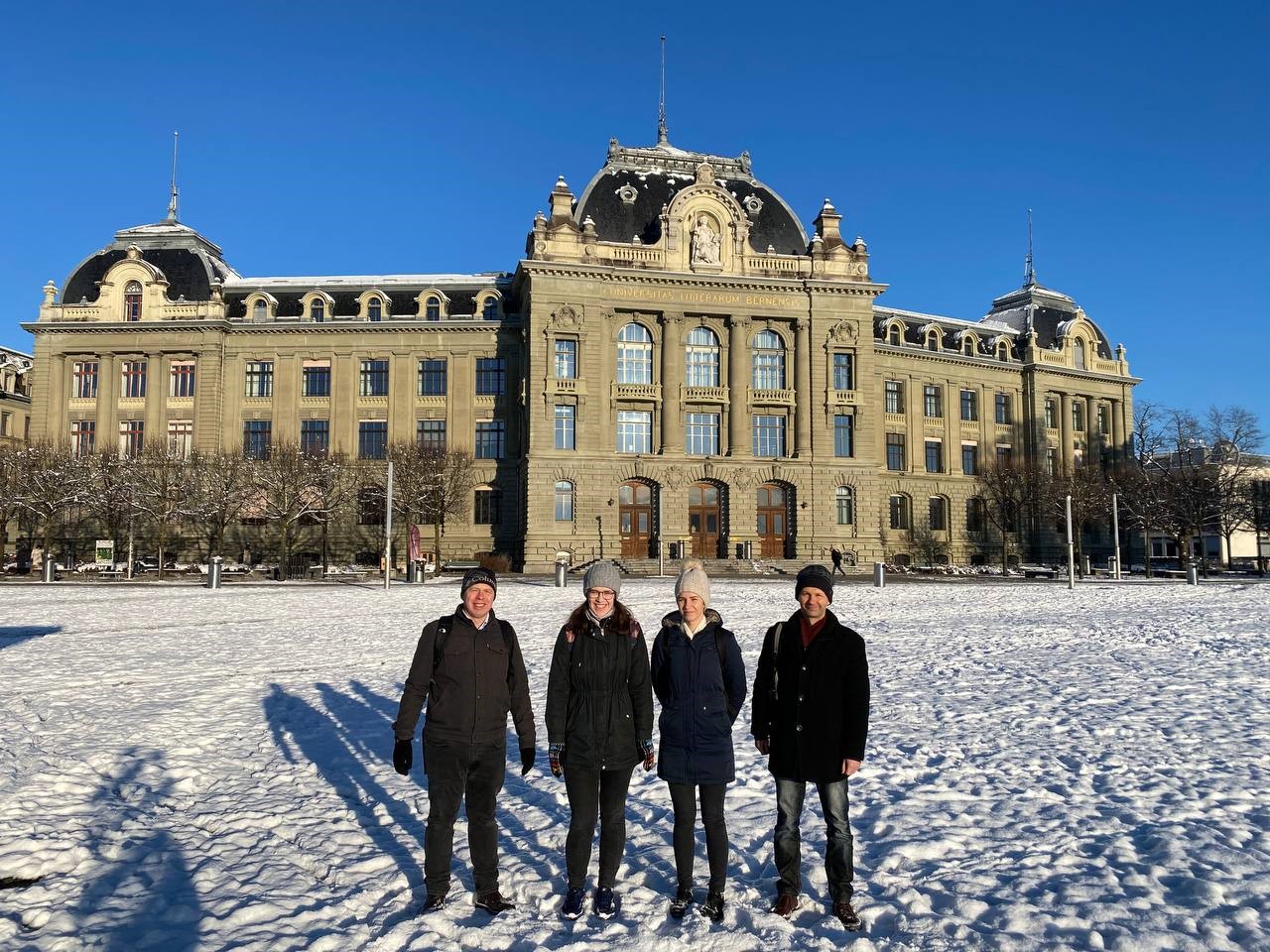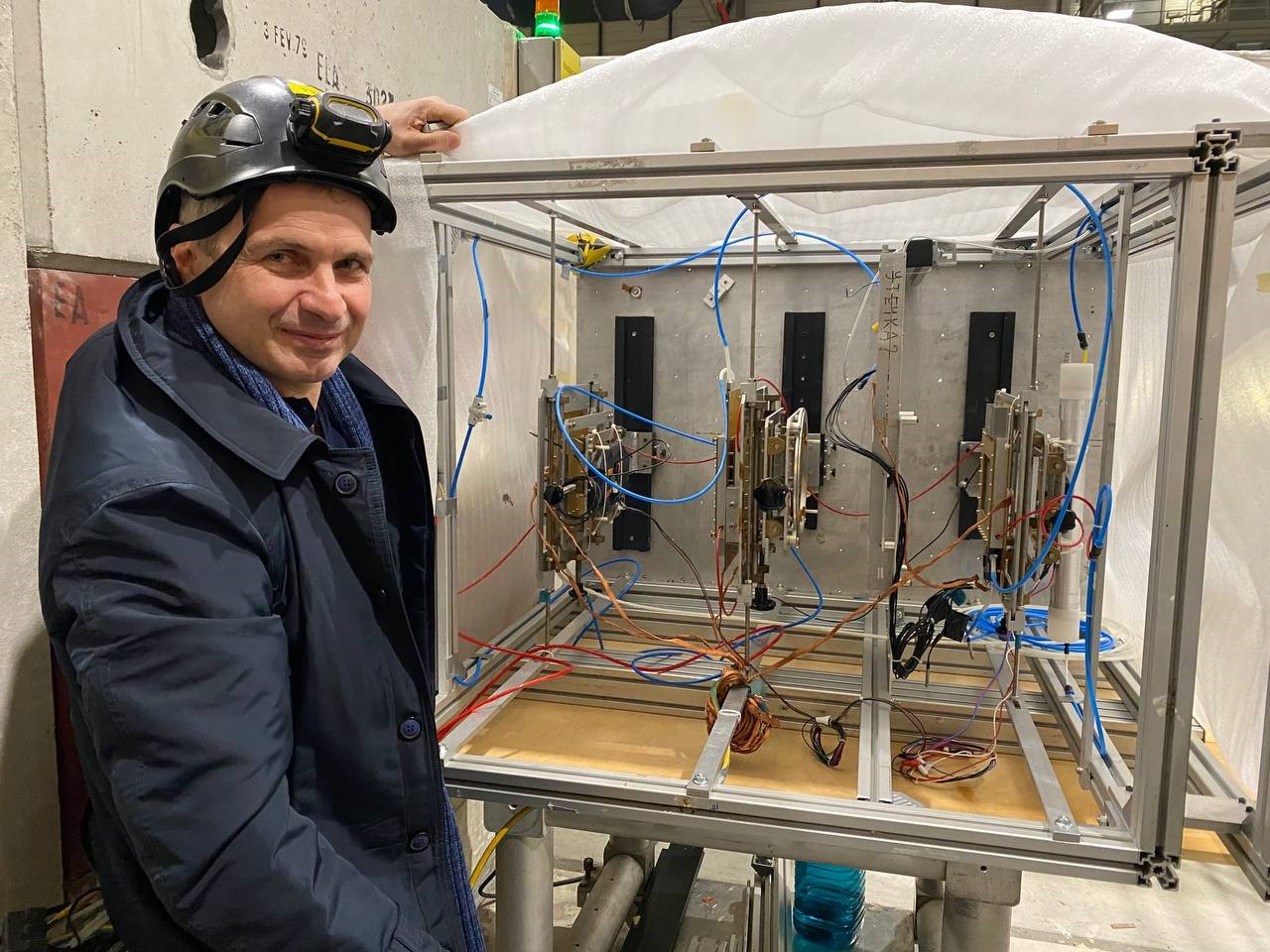JINR at DUNE Collaboration meeting
News, 09 February 2023
At the end of January 2023, CERN hosted the meeting of the DUNE Collaboration. It was attended by staff members from the Experimental Department of Particle Physics of the Dzhelepov Laboratory of Nuclear Problems (EDPP of DLNP). Participants of the Collaboration discussed the status of the project and further scientific plans.
They considered processing and analysing the first data from the prototype of one of the DUNE near-detector complex facilities at the Fermi National Accelerator Laboratory (Fermilab, USA). The tasks of analysing the data collected in the past years from the far detector prototype at CERN were discussed as well.
 DUNE Collaboration at January meeting at CERN. Photo from personal archive of DUNE Collaboration members
DUNE Collaboration at January meeting at CERN. Photo from personal archive of DUNE Collaboration members
At present, the construction is going on at the Sanford Underground Research Centre: the far-detector underground hall and the laboratory are half-completed. The DUNE Experiment will start operating with two far-detector modules. The proton beam power planned for the launch is 1.2 MW. Due to the complexity of the ND-GAr manufacture, it will be temporarily replaced first with The Muon Spectrometer (TMS) made of scintillator with iron layers. At the next stage, two other far-detector modules will be installed, ND-GAr assembled, and the accelerator upgraded to the beam power of 2.4 MW. The SAND Facility will ensure a reliable monitoring of the neutrino beam, allow its flux and energy spectrum shape to be measured during a short time. In addition, the detector structure of thin layers of graphite (C) and polypropylene (CH2) will ensure the measurement of cross sections of neutrino interactions (and other processes) on the hydrogen target free of intranuclear interactions using the subtraction method. Already during the first years of the DUNE operation, it will be possible to measure the neutrino mass ordering. It will take longer to accumulate statistics to measure the CP violation phase.
 Nikolay Anfimov and Alexander Selyunin (DLNP JINR) at the University of Bern near time projection chamber module placed in cryostat. This module will be a part of ND-LAr prototype at Fermilab
Nikolay Anfimov and Alexander Selyunin (DLNP JINR) at the University of Bern near time projection chamber module placed in cryostat. This module will be a part of ND-LAr prototype at Fermilab
A work meeting at the University of Bern preceded the DUNE Collaboration meeting to discuss data analysis of the prototype of the ND-LAr near detector. During this year, participants plan to install four scaled-down ND-LAr modules in the cryostat at Fermilab, along with plastic scintillator cell modules of the MINERvA Experiment with the neutrino beam intended for the NOvA Experiment. Apart from methodological research, this prototype will be used to solve physics problems, such as measurements of neutrino interaction cross sections, charged particle multiplicity, and others. The full-sized ND-LAr will contain 35 modules. The EDPP scientific group is responsible for development of the ND-LAr light readout system and is involved in testing and assembling the modules at the University of Bern.
 DLNP JINR staff members are participants of the workshop on the prototype of the ND-LAr near detector at the University of Bern
DLNP JINR staff members are participants of the workshop on the prototype of the ND-LAr near detector at the University of Bern
About DUNE Experiment
Deep Underground Neutrino Experiment (DUNE) is a next-generation (anti)neutrino accelerator experiment being constructed with the aim to refine neutrino oscillation parameters and measure those still unknown. Its main objectives are measuring the neutrino mass ordering and CP invariance violation in the lepton sector. Thus, it continues the experimental programmes of currently ongoing NOvA (the USA) and T2K (Japan). DUNE will be dealing with muon (anti)neutrinos produced at the Fermilab Accelerator Complex as a result of interaction between the ejected proton beam and fixed target. Neutrinos produced in this way will have to cover a distance of 1300 km. There they will be recorded at the Sanford Underground Research Facility (the USA) with a 70-kt far detector. After covering this distance, the beam composition will change due to oscillations. The control measurement of the initial neutrino flux will be taken at the near detector complex consisting of three facilities. The first one, the ND-LAr (Near Detector Liquid Argon), is a modular liquid-argon time projection chamber similar in methodology to the far detector. The second detector, the ND-GAr (Near Detector Gaseous Argon), will be located close to the first one. This is a gas time projection high-pressure chamber located inside the magnet, which will allow determining the lepton charge and momentum during neutrino interaction inside the ND-LAr. Both detectors will be placed on the movable platform to measure the beam composition at a distance of up to 33 m away from the axis (DUNE−PRISM concept). The third facility of the DUNE near-detector complex, SAND (System for on-Axis Neutrino Detection), a straw-tube tracker (STT) inside the solenoid magnet of the KLOE Experiment (Frascati, Italy), will be fixed on the beam axis. The DUNE physics programme is multifaceted due to various detecting methods and goes beyond the mere measurement of neutrino oscillation parameters.
 Temur Enik (VBLHEP) and test bench with straw tubes for the SAND near detector
Temur Enik (VBLHEP) and test bench with straw tubes for the SAND near detector
Specialists from several subdivisions of the Joint Institute are participating in the preparation of the experiment. EDPP scientists not only contribute methodologically but also perform simulations, develop reconstruction and DUNE data analysis programmes. At CERN, methodological work with straw tubes is being conducted at the test bench developed by VBLHEP JINR specialists for the SAND detector. MLIT JINR specialists are developing computational infrastructure for data storage and processing. This comprehensive professional contribution makes JINR staff participation in the DUNE project especially valuable and noticeable for the Collaboration.